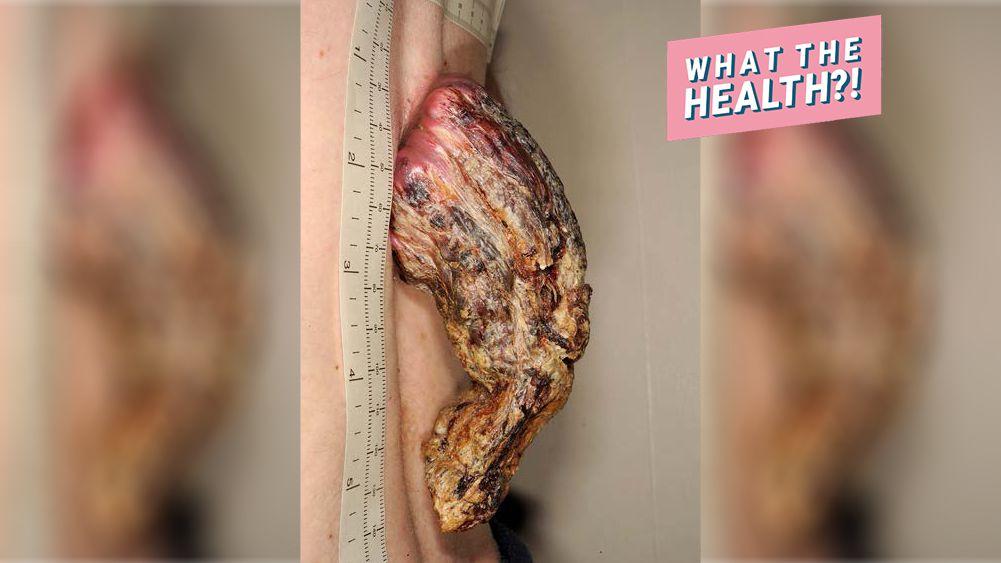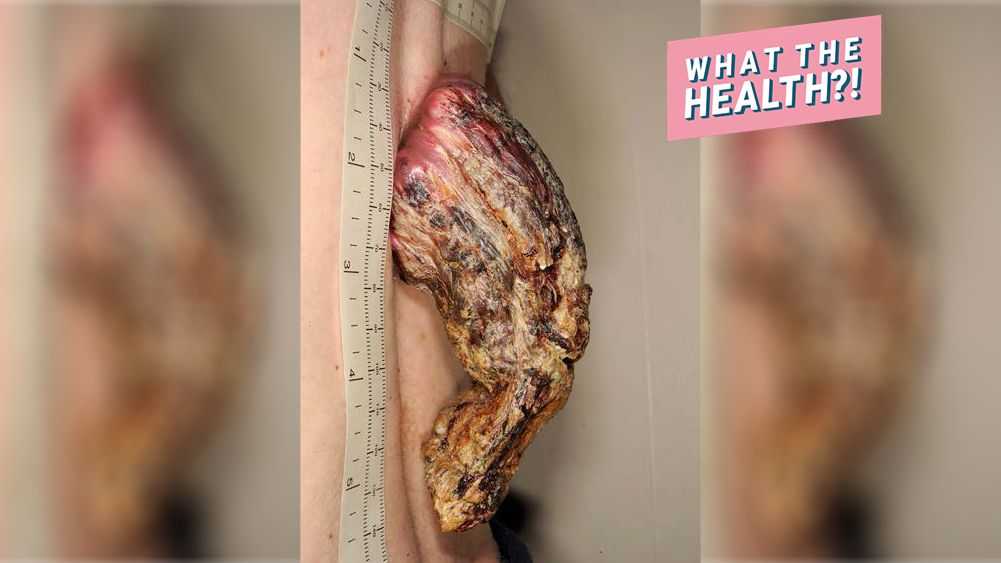A 50-year-old man, whose untreated skin cancer resulted in the growth of a 5-inch-long “dragon horn,” is the subject of a recent case report detailed in the journal BMJ Case Reports.
According to the report, a lesion had been growing from the man’s back for three years before he finally visited a hospital in the UK. When doctors examined him, they documented their findings of an “enormous” cutaneous horn measuring 5.5 inches long and 2.3 inches wide. However, other than having light skin (a so-called 'Fitzpatrick II' skin type), he reported no significant risk factors of skin cancer, such as little sun exposure, no previous or family history of skin malignancy, and no immunosuppression.
 cutaneous horn
cutaneous horn
The report noted that cutaneous horns are “thought to result from underlying benign, premalignant or malignant [epidermal lesions] in 61.1%, 23.2% and 15.7% of cases, respectively.” Of those horns with a malignant base, squamous cell carcinoma has been reported in 94% of cases. These types of large growths are not common, the report explains, because most cases of squamous cell carcinoma are ”diagnosed and treated early before becoming ‘dragon horns.’”
According to the report, more cases of SCC are being reported in Europe. While cutaneous horns are very rare, they hope their findings will encourage awareness. "This highlights that despite current public skin cancer awareness and rigorous healthcare measures, cases like this can still arise and slip through the net," the authors wrote.
What is squamous cell carcinoma (SCC)?
Per the American Cancer Society, squamous cell carcinomas account for 20% of all skin cancer cases. Unlike basal cell carcinomas, which start in the lower part of the epidermis, SCCs start in the flat cells in the upper (outer) part of it.
SCC commonly presents itself in sun-exposed areas of the body, including the face, ears, neck, lips, and backs of the hands, and it can also develop in scars or chronic skin sores elsewhere.
Treatment usually involves removing SCCs completely. However, “they are more likely than basal cell cancers to grow into deeper layers of skin and spread to other parts of the body.”
The CDC points out that both basal cell carcinoma and squamous cell carcinoma skin cancer are, “highly curable, but can be disfiguring and costly to treat.”
RELATED: This 24-Year-Old Thought the Tiny Spot Under Her Eye Was a Pimple. It Turned Out to Be Skin Cancer
Therefore, prevention is key. Because the majority of skin cancer cases are caused by overexposure to UV light, staying out of the sun and applying proper sun protection factor is key to keeping yourself skin cancer free—especially for those with the following characteristics who are at increased risk:
-
A lighter natural skin color.
-
Skin that burns, freckles, reddens easily, or becomes painful in the sun.
-
Blue or green eyes.
-
Blond or red hair.
-
Certain types and a large number of moles.
-
A family history of skin cancer.
-
A personal history of skin cancer.
Additionally, regularly check yourself for any unusual moles or changes in your skin. If you notice any irregularities, report them to your doctor immediately.
Sign up for our Healthy Living newsletter to get our best stories delivered to your inbox daily!
